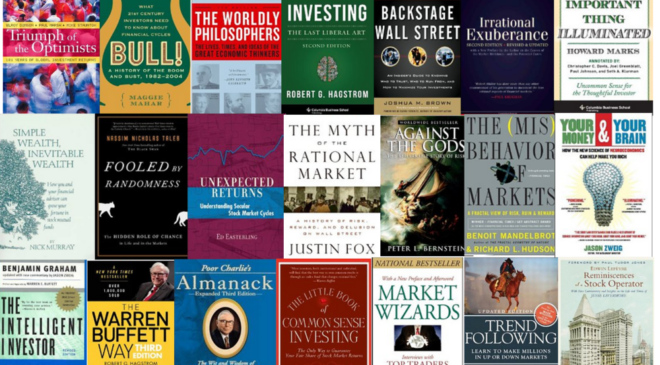Knowing the common mistakes to avoid in stock market can save you from permanent loss of capital.
Warren Buffet once famously said that there are 2 rules for success in stock market.
- Rule 1 – never loose your capital.
- Rule 2 – never forget rule no. 1.
Such losses can sometimes be inflicted by scam-stars operating in disguise of advisors, while at other, they might be self-inflicted.
In the following sections, we present 5 such mistakes to avoid in stock market, in order to preserve your capital and eventually become wealthy!
100% guaranteed returns with 3-4 day FREE trial
If you’ve been investing in stocks for a while, I bet you have received an SMS or E-mail at some point offering 100% guaranteed returns in stocks, with 3-4 day free trial.
And you know what, some of these free trials actually work!
The easy way to riches therefore, is figuring out the right ones, and then pouring our life’s savings into their schemes. Their plans might be a bit expensive, but then that’s the cost one has to pay for guaranteed 100% accuracy, right?
Wrong!
This is actually a massive scam and their modus operandi is as follows.
Modus operandi
- First they grab a list of people who trade in stocks. Such lists can be easily purchased at nominal price.
- Next, they send bulk SMS with their 3 days (or X days) FREE trail offer with 100% hits else money back guaranteed. Let’s say they SMS 2 Lakh individuals and 1% fall for it, which is 2000 people.
- Next, they divide this 2000 people into 2 groups, a thousand each – A & B. To Group A they send a BUY recommendation on stock X, while to Group B they recommend a SELL on the same stock! Of course one of the tips would work, after which they stop communicating to the group where the tip did not work.
- Next they take the 1000 people left, divide them again into groups of 500 and repeat the process.
- At the end of the 3rd day they will be left with a group of 250 people from the 2000 initially subscribed, who have received 3 consecutive successful tips.
- Assume subscription fees of Rs 50,000 (yes, 50K! and they can be even more costly), the person operating this scam has made a cool 1.25 crores in 3 days with very little effort.
Needless to say, the quality of actual stock tips received during the subscription period is anybody’s guess! But that does not count; these are carefully crafted scams and you should stay away from it.
Stock tips, XYZ is going to double, buy in huge quantities
This is another popular SMS scam that you must have received as well. Typically the SMS goes like – XYZ stock is going up and expected to offer huge gains in X-days / weeks. You must buy immediately in huge quantities to reap a windfall.
Tell me, if a stock is really going to offer huge gains, why would someone send SMSs to you, instead of buying it themselves?
These are sent by operators trying to offload stocks they hold (or sometimes their client’s hold) at a high price by creating artificial demand. Never pay attention to these tips.
Day trading
Day trading is a sucker’s game that always benefits the brokers, but rarely the traders.
Show me one investor who has created sustainable wealth by day-trading alone. Search the Internet for day trading success rates and you will know.
One such study shows more than 80% of day traders lost money in a typical 6 month period, with only 1% succeeding in making predictable profits net of fees.
Why do people still practice it? Because the brokers always benefit from it and they encourage their clients. Also, speculation has excited humans for ages. Don’t do it.
Leverage
Again, your broker might be encouraging you to use leverage, because they earn hefty interest on it, but for the novice investor it is like suicide. Brokers will always explain the constructive power of leverage, carefully leaving out its potential destructive impact.
Let’s take an example to elaborate.
Suppose, you execute two trades on 75% margin. Total capital committed at the beginning of the trades was Rs 100, out of which Rs 25 was your own capital and Rs 75 was borrowed from the broker. Assume, that you make 50% gain on the first trade and 50% loss on the second. What would your capital be at the end of two trades? Let’s analyse.
You made Rs 50 profit on the first trade using a capital of Rs 25, which is a fantastic a 200% gain! Your portfolio at end of first trade will be Rs. 150. Unfortunately, you lost 50% of Rs 150 on your second trade, so your portfolio at the end of the second the trades will be Rs 75. But you borrowed Rs 75 from your broker, implying, you are bankrupt!
Your portfolio value is actually not zero, but negative, as you have to pay for the transaction costs and interest to your broker. This is how novice traders sometimes go bankrupt in stock market, particularly towards the end of a roaring bull run.
Leverage to the uninitiated can be suicidal.
Derivatives
Futures and Options is another segment which should be avoided by most small investors at all cost.
This is partly because of its leveraged nature, the pitfalls of which we already discussed, and partly because of its inherent complexities that takes years to figure out.
For example the nature of transaction charges may be different when you are squaring off an option position before expiry as opposed to letting it expire, and not knowing that may have devastating consequences.
Case in point, this day trader thought he had made 6L in 5 minutes dabbling in FNO, only to realise that his net earnings after taxes (STT) was a loss of 24L.
No wonder Buffett calls derivatives Weapons of Mass Destruction.
Conclusion
Short-cuts to riches can only take you to one place – bankruptcy.
In this article, we discussed 5 such mistakes to avoid in stock market, in order to become successful in the long run, and protect your capital.
As Munger famously said about investing, you don’t have to be brilliant, only little bit wiser than the other guys, on average, for a long time.
If you enjoyed reading this piece, comment below, and share it with your friends and colleagues. Happy investing!






